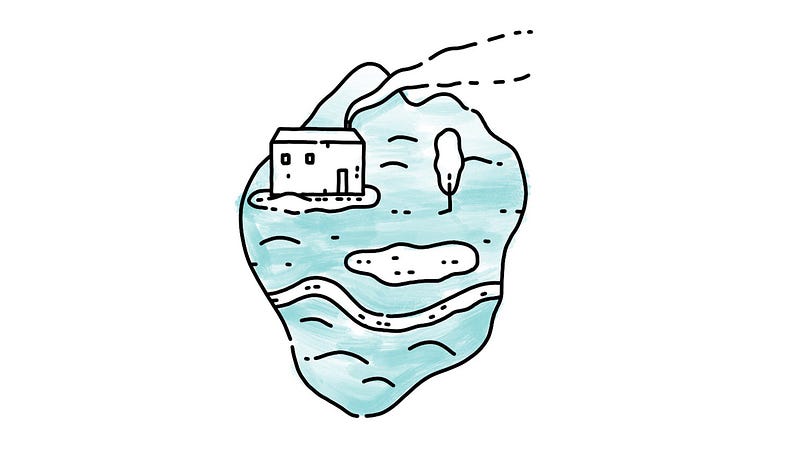Author: Alex Mathers
Whether you think it’s all mumbo woo-woo or not, many people, including myself, have seen their lives change by meditating.
Yoga International defines meditation as:
“Meditation is a precise technique for resting the mind and attaining a state of consciousness that is different from the normal waking state. It is the means for fathoming all the levels of ourselves and finally experiencing the center of consciousness within.”
For me, it has helped me…
- Improve focus
- Lower anxiety
- Train my imagination and visualisation skills
- Release stuck, negative energy
- Improve my mood
…when I’ve remembered to do it.
For the effects of meditation to be felt deeply, we need to practice it with consistency.
There are many ways to do it. You are not constricted to one. They need not tap into anything ‘spiritual’ or religious.
What interests me most about what meditation can do is its ability to train the most powerful tool we have — the things that make us human — our thoughts.
I believe that settling into the cockpit of our minds and moulding our thoughts in positive, inventive ways, can change our lives more than any other strategy of self-development.
As I’ve written about often, many if not all of our struggles are not due to the actual reality of an experience, but to how we think of that experience.
Our thoughts can lift us up, or they can destroy us.
And so the process of becoming more intimate with our thoughts, as opposed to being at their mercy, is a skill worth developing.
However, more traditional meditation methods can be stark, uncomfortable, and hard to ‘stay’ with for longer.
Meditation in its true sense does help, but sometimes we need to focus on something more obviously vivid, to ease us into it, and to more rapidly improve our skill at ‘though wizardry.’
Here are three meditation alternatives for training your thoughts:
1. Explore worlds
Take a walk through a beautiful, calming environment in your mind’s eye, whether a real place or fictional.
Allow that world to reveal itself to you gradually as you move through it.
Imagine you’re Neo, plugged in and creating your own sensory environment inside the ‘Matrix.’
Perhaps you’re flying through it like Superman, seeing mountains, lakes, weird creatures, and jungles reveal themselves through the mists.

This is not a natural thing to do. You will likely have an urge to quit and pull out your phone. Don’t do this. Stay in this world for a good ten minutes or more.
You might view this as a waste of time — as far too great a luxury — when you ‘should’ be busy doing other things.
I can assure you, doing this regularly will soothe your mind and expand your imagination in subtly powerful ways.
Maybe you’re walking around a pristine island in the middle of nowhere, and you come across an array of weird and wonderful plants and animals. You can smell sea salt, feel the wind on your face, and hear coconuts falling.
You might be walking through a bizarre abandoned metropolis full of coloured, glowing bouncing balls.
Allow these worlds to unfold slowly, rather than jumping from one to the next too quickly.
You can be as imaginative as you like. You’re performing your own inception on yourself here.
How far can you go?
Immerse yourself as far as you can go. You’ll notice time moving quickly with this exercise.
Benefits: Improved focus, creativity, and imaginative skill; calming.
2. Picture your winning self
Visualise things you want in your life, whether it’s holding your published novel, or living in a dream house, or looking and feeling confident in environments that would otherwise make you anxious.
Use this time to delight in selfishness.
Again, make this as sensory as possible. Immerse yourself in the experience and truly feel what it would be like to touch, and be a part of, these winning realities.

Fill your body with exciting sensations and emotions.
These will carry over into your day, and the more you do this and associate these feelings with these images, the more you will subconsciously act to bring them into your life for real.
The more you reinforce these visions in your mind with you in a successful context, the more your self-image will improve.
This exercise is all about reinforcing belief: if you cannot see yourself with the things you want in life, and feeling and behaving like the person you want to be, you will not believe in it, and you will struggle to make it a reality.
Read Maxwell Maltz’s book: Psycho-Cybernetics, you will see how necessary our self-image is to our optimism, confidence and everyday success.
Benefits: Bringing more rewards and fulfilment into your life; mood improvement; visualisation and imaginative skill development; improved self-esteem and optimism.
3. Visualise objects deeply
Visualise one object at a time, either in your head, or you can gaze at single real objects around you.

This one can be challenging, but it can be great practice for artists and anyone who has incorporated too much digital into their lives.
When you relax into it, you will find this a richly satisfying experience. I certainly do.
The game is now to make that object tactile and real in your mind.
You are transplanting or designing an object into your brain, as a physical object, extrapolating into all senses.
Imagine what it feels like to touch it, to draw it with a pencil, to mould that object. What’s inside it? What do its innards feel like? What does it look like at the microscopic; the atomic level?
Benefits: Creative skill and improved spatial awareness and third-dimensional construction in space. Singularity of focus. Good for anxiety reduction, rewiring and refocusing the unraveled, social media mind.
source: medium.com



![[Covid Impact]: How To Stay Positive In The Midst Of A Crisis](https://startupanz.com/wp-content/uploads/2021/01/mountain-climber-2427191_1280-218x150.jpg)
![[NEW YEAR GOALS]: 50 Ways To Live Life On Your Own Terms](https://startupanz.com/wp-content/uploads/2020/04/yoga-fitness-218x150.jpg)
![[HEALTH]: 7 Daily Tips To Manage Stress At Home & Workplace](https://startupanz.com/wp-content/uploads/2020/11/vitalii-pavlyshynets-kcRFW-Hje8Y-unsplash-218x150.jpg)






